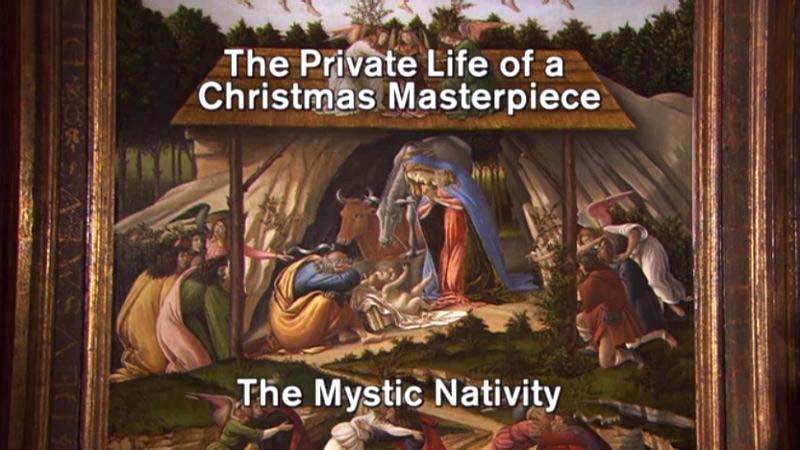The story of the Mystic Nativity – Sandro Botticelli’s beautiful image of hope in troubled times. This masterpiece was painted 500 years ago in Florence, at the height of the city’s fame & influence.
Botticelli’s Mystic Nativity is a painting that lovers of mystery fiction should like: a Renaissance masterpiece crammed with cryptic symbols disguising a dangerous message. But it is much more besides. Painted in 1500 by one of the most famous artists of all time, it is a supremely beautiful vision of maternal love, earthly harmony and heavenly ecstasy.
But the painting also has a dark side. It was inspired by the preaching of Savonarola, the puritanical friar who held Florence in his grip in the 1490s. He purged the city of non-Christian art, destroying it on the notorious Bonfire of the Vanities. But he himself met a violent, fiery end, and Botticelli had to carefully hide the Mystic Nativity’s dangerous meaning. Only a recent chance discovery by a scholar fully unlocked the painting’s message.
The painting was the first Botticelli work to arrive in Britain, brought here in 1799 by a wealthy young owner of slave plantations. It would have cost him just a few pounds at a time when Botticelli’s name was all but forgotten. But before long, the painting would be on display to an audience of millions at the world’s biggest ever art exhibition held in industrial Manchester.
The Mystic Nativity – Sandro Botticelli
Alessandro di Mariano di Vanni Filipepi (c. 1445 – May 17, 1510), known as Sandro Botticelli, was an Italian painter of the Early Renaissance. He belonged to the Florentine School under the patronage of Lorenzo de’ Medici, a movement that Giorgio Vasari would characterize less than a hundred years later in his Vita of Botticelli as a “golden age”. Botticelli’s posthumous reputation suffered until the late 19th century; since then, his work has been seen to represent the linear grace of Early Renaissance painting.




